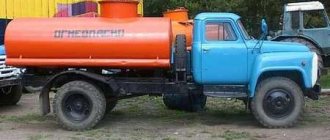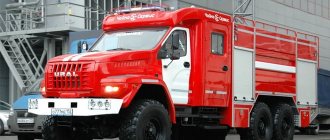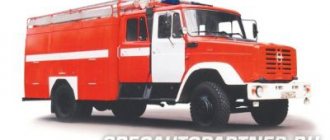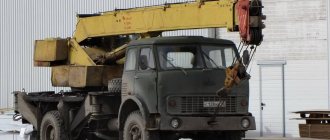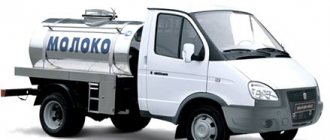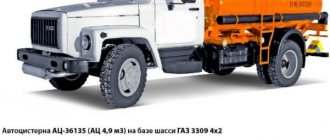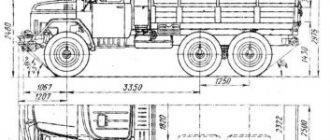A tank truck for transporting petroleum products belongs to the category of trucks and is supplemented with a special container. It is subject to high safety requirements, like other vehicles used to transport dangerous goods.
There are many types of petroleum products, which are grouped according to similar properties:
- hot bitumen material;
- substances in solid form (cold bitumen, paraffin);
- conservation and plastic lubricants;
- petroleum oils (hydraulic, transformer, insulating, motor);
- fuel (aviation, jet and diesel fuel, kerosene, gasoline).
Tank truck for transporting petroleum products: varieties
Cars can have different purposes. Some are used to transport oils and fuels to their destination. Others provide two functions simultaneously: transporting fuel and refueling equipment. A tanker truck for transporting petroleum products must comply with fire safety requirements due to the characteristics of the transported substances, which are explosive. The design consists of several compartments necessary for the simultaneous transportation of several types of fuel.
Characteristics
Technical characteristics depend on the purpose and determine such parameters as:
- total weight of the tank;
- pipeline diameter;
- maximum speed (about 70 km/h);
- number of compartments;
- volume;
- materials used for manufacturing;
- location of the technical cabinet;
- vehicle shape.
A fuel tanker can transport both light and dark petroleum products, which include fuel oil. But after their delivery, pre-treatment with hot steam is required for subsequent use as intended.
The main difference between a gas station and a conventional fuel truck is that the first option is equipped with a drain pump and a dispensing valve. In addition, many modern fuel stations have fuel meters.
If a tank truck for transporting petroleum products, the dimensions of which are on average 9x2.5x4 m, has several compartments, each of them must be equipped with a separate drain, this is necessary to eliminate the possibility of mixing different types of materials.
Volume and chassis
Surprisingly, but true: small barrels, the volume of which is only one or two cubic meters, are also called tanks. Such containers are most often mounted on the base of commercial vehicles for urban use. In Europe, for example, they are used by representatives of small and medium-sized businesses for the prompt delivery of soft drinks and beer. They are also held in high esteem by utility workers who are concerned about cleaning streets in densely built-up areas. But you never know where else such “dwarfs” are used.
As for other barrel-shaped ones, their volume can reach 40 m3. Such containers are used in industrial and civil construction, agriculture, military and civilian aviation - in a word, wherever there is a need for them.
The volume of the transported tank directly depends on the carrying capacity of the base vehicle chassis and the platform of the trailer or semi-trailer. And almost any chassis of domestic and foreign production is used as a base for tank trucks: from the Russian Gazelle to the American Peterbilt.
The list of factories and companies producing tank trucks on our continent is huge. But on the continent - even in the CIS there are dozens of them. Suffice it to recall the Russian OJSC GRAZ, CJSC Betsema, Alekseevka Khimmash, Experimental Rzhevsky, as well as Voskresensky and Lyudinovsky machine-building and NefAZ from Tatarstan. Certain types of tanks are produced in Belarus and Ukraine. And although new companies producing such special equipment appear very rarely, the number of items is steadily growing.
Alternative option
Transportation of petroleum products is also possible using three-axle trailers that are attached to truck tractors (MAZ, URAL). This transportation option is optimal for off-road use, as they are equipped with specialized tires and additional side lighting. In addition, they are equipped with spare wheels, which ensures safety and smooth transportation.
The tank trailer package includes the following equipment:
- screw jacks placed on both sides;
- ball valves and a sump with filter elements are located on the rear;
- the platform, made of specialized steel, and complemented by flooring, is equipped with a folding fence and a ladder;
- the container is made of steel and has an elliptical shape, its volume is on average 40 m3;
- the volume of fuel is measured by level meters installed in the neck;
- two sealed hatches are located on the bottom side;
- The neck of the tank is fixed with hinged bolts and is complemented by a breathing valve designed to reduce the amount of fuel evaporated.
Volumetric method
Volume measurement is carried out by direct measurements using the following instruments:
- Using a verification certificate (calibration passport);
- Using a verified tank with an up-to-date calibration table. Measuring the filling level before and after loading is carried out using an electronic string or a metro rod;
- Using a shipper liquid meter installed on the tanker;
- Using the consignee's verified liquid meter installed at the product discharge point.
Peculiarities
The fuel tanker is designed for a set pressure value, which is regulated by transportation safety rules. In addition, regardless of the type of fuel, it must be possible to take samples to determine the quality and compliance of the substances with standards. A tanker truck for transporting petroleum products, the volume of which, as a rule, is within 40 cubic meters, has a container made of steel and placed on the chassis. The pressure inside is built up automatically to allow drainage through special devices.
Transportation rules
There are basic requirements regarding the transportation of petroleum products and the drivers driving the vehicle. Among them it is worth highlighting the following:
- a tanker truck for transporting petroleum products is painted in certain colors;
- the presence of inscriptions and signs warning of danger;
- enhanced fire safety measures;
- installation of signaling devices (orange flashing lights);
- availability of personal protective equipment;
- The driver must undergo appropriate training and have permission to transport dangerous goods.
A tank truck for transporting petroleum products, the photo of which is presented above, can be equipped with a dispensing hose, liquid meters, pumps with different capacities, electronic sealing, a steam-air mixture return system and devices for bottom loading.
Transportation of petroleum products is an important and dangerous process. To deliver petroleum products, special transport is used that meets all the requirements for transporting flammable substances - tank trucks.
Compliance of tank trucks with safety requirements
Due to the fact that tanks for petroleum products are characterized by an increased fire hazard, close attention is paid to safety precautions during their production. Thus, the exhaust pipes are equipped with a spark arrester, designed to reduce the likelihood of accidental fire. To protect against increased static that occurs during vehicle movement on the road, remote grounding has been implemented. To ensure the ability to extinguish a fire as quickly as possible, each tanker for petroleum products is equipped with several fire extinguishers and boxes with sand and felt. Also, fire protection means include quick-release connections and bottom and breathing valves.
Thus, the presented products fully comply with the rules for the transportation of dangerous goods by road, which is confirmed by the relevant certificates.
Characteristics of a tanker truck for petroleum products
A tanker truck is a truck equipped with a tank for transporting petroleum products.
Tankers are divided into two types:
- transport – intended for the transportation of petroleum products;
- refueling stations – necessary for transportation and refueling.
These tank trucks differ only in their bodies. Tanker trucks may or may not be equipped with equipment for refueling operations.
Each transport and refueling tank semi-trailer is modified to transport light and dark petroleum products, which cannot be transported in the same containers.
A tank truck for transporting light petroleum products (fuel tanker) is designed for transporting gasoline, diesel fuel, and motor oil.
Gasoline consists of volatile and explosive particles, so fuel trucks are manufactured taking into account high fire safety requirements. The design of the fuel tanker makes it possible to transport several types of fuel at the same time.
A tank truck for transporting dark types of petroleum products (bitumen tanker) is designed for transporting oil, bitumen, and fuel oil. Dark oil products have a rather thick consistency and can freeze at low temperatures, which will complicate the pumping process. Therefore, most often, a bitumen tank truck is equipped with special systems that are capable of heating the cargo up to 250C, which allows transporting petroleum products over long distances.
You don't need anymore
- Thinking about which manufacturer to choose
- Compare all prices and get the best conditions
- Choose the optimal tank farm
- Select tank trucks that are suitable in terms of volume and technical equipment
- Forecast monthly demand and purchase/reserve fuel at the oil depot
- Control the quality of the purchased product at all stages
Alexey Panin Founder
or calculate the cost of fuel taking into account delivery
Fuel calculator
Volumes of tank trucks for petroleum products
Tankers for transporting petroleum products are made of steel or fiberglass of varying volumes.
Based on the type of material, tanks are divided into several categories:
- made of structural steel;
- made of aluminum;
- stainless steel;
- made of fiberglass.
Structural steel tank trucks are used to transport light petroleum products. These are durable machines with a fairly large weight of 7 to 9 tons. The number of compartments, depending on the volume of the tank, ranges from 3 to 5. The volume of such a tank is from 1,500 to 50,000 liters.
Aluminum tankers are designed to transport fuel. Thanks to the material, it is lighter than the previous type and the weight of the machine is 5.7 tons. The tank consists of 5 compartments with a total capacity of 36,000 liters.
Methods for checking tank trucks for liquid petroleum products
To transport petroleum products, a large number of calibrated tank trucks are used, which simultaneously play the role of transport and measuring equipment.
Since the cost of petroleum products is high, increased demands are placed on calibration accuracy.
A tanker truck for transporting petroleum products is a measure of total capacity. This means that, according to the established GOST, tank trucks filled to the neck correspond to their nominal volume. But this applies only to tanks that have passed the test. Such tanker trucks can legally transport and measure petroleum products at the same time.
Testing (verification) is carried out using mass and volumetric methods.
With the mass method, the transport measure is weighed on a scale, taking into account the temperature, density of air and test liquid.
With the volumetric method, a test liquid is pumped into the tanker, which makes it possible to determine the actual capacity of the tank.
Tankers that have passed verification are registered in the register of measuring instruments.
Mass method
Mass measurement is carried out as follows:
- by direct measurement method, that is, using verified cargo scales;
- by the method of indirect measurement, that is, calculating mass from volume through the measured density of the product.
To ensure the reliability and uniformity of measurements of the mass or volume of petroleum products, as well as control their quality, it is necessary to have special equipment and measuring instruments that must be certified (certified, entered into the state register). They must also have valid verification certificates, issued in accordance with the requirements of the relevant verification methods, and (or) verification marks.
Please also note that it is better to measure the physical characteristics of the petroleum product and take samples directly from the tanker. Since this method will allow a more correct analysis of the reasons for a possible deviation of the product characteristics from those stated in the consignment note.
When delivering petroleum products in tank trucks, upon its arrival, the presence and integrity of the seals, the technical condition of the tank truck are checked, the completeness of the filling of the tank and the compliance of the petroleum product with what is specified in the consignment note presented by the driver are determined.
The driver is required to carry and present the following documents:
waybill;
fuel quality certificate;
tank truck calibration certificate.
Shipping documents must be properly executed and have a number, date, signature and seal. Particular attention should be paid to the consignment note
. The document must contain the following information: name of the petroleum product, actual quality value, quantity of the product in volumetric (liters) or mass (kg) units, and the density of the petroleum product at a given temperature at the time of measurement must be indicated. The passport contains the name of the product and data on volume, manufacturer and quality indicators.
Tankers with petroleum products must be sealed by the shipper in accordance with the current transportation rules, with the exception of those cases when petroleum products are exported by the recipient's vehicles (pickup). In this case, tank trucks that transport gasoline of the AI-92, AI-98 and AI-100 brands are subject to sealing. The numbers of the seals must match the numbers indicated on the consignment note. In practice, AC sealing is performed only at a few oil refinery terminals.
To fully understand the process of determining the amount of fuel, we will dwell on each of the methods in more detail.
Get advice on all services
The manager will call you back in a minute and advise you in detail on any additional questions
Volume measurement using a verification certificate (calibration passport).
The technical operation of tank trucks is carried out in accordance with the orders of the Russian Ministry of Energy. In accordance with current standards, tank trucks must be calibrated (verified) once a year. In this case, an official certificate is issued - a calibration passport ,
which is kept by the driver during tank operation. This document contains information about the total volume of the tank truck, the number of sections and the volume of each section. When using this measurement method, you must:
- Check the validity of the certificate;
Organize the installation of the tank truck on a flat horizontal platform (concrete, wood or metal) with an inclination angle of no more than 1° and dimensions sufficient for installation;
- Make sure that the tanker engine is turned off and the tanker is connected to a grounding device. Carry out an external inspection and check the integrity of the seals on the neck and drain valve (drain valve);
- After removing the seals, check the filling level of the tanker “along the bar”, take a sample and measure the temperature of the oil product. The fuel must touch the strips installed on the walls of the necks in each section;
- Upon completion of draining, check that the tanker is completely empty.
Volume measurement using a verified tank.
Another way to determine the amount of petroleum product is to use tank calibration tables. To compile this table, the tank is calibrated (provided with a scale), where each division (linear measure) corresponds to a certain volume of product. Calibration of tanks is carried out in accordance with the requirements of GOST 8.346-2000 and GOST 5.870-2000.
The calibration table is compiled by the metrological service or commission and is documented in an act endorsed by the chief engineer of the enterprise. The table is compiled for 5 years and stored at the enterprise.
To measure the volume of petroleum product using calibrated tanks, it is necessary to measure the height before and after draining. The level can be measured with a weighted tape measure or a measuring rod. The measuring device should be lowered slowly and strictly vertically. During measurements, the oil product in the tank must maintain a calm surface state. The height of the column is found as the difference between the lower and upper readings on a tape measure. By setting the height and knowing the internal volume for a given height (calibration table), you can determine the amount of petroleum product in the tank.
The result obtained must be compared with the data specified in the consignment note.
When using this method of measuring volume using underground tanks, it is necessary to make allowances for temperature conditions. In winter they are warmer than outside, and in summer they are colder, and the change in volume depends on temperature fluctuations.
Volume measurement using a liquid meter.
A liquid volume meter can also be used to measure the volume of petroleum products. The error of such flow meters can be 0.5%. The device is installed both on a tank for storing petroleum products and directly on a tank truck.
Please note that in accordance with regulatory documentation, the meter is subject to mandatory state verification. State and departmental verification is certified by branding and the issuance of a verification certificate or a mark in the meter’s passport.
If necessary, you can conduct your own testing by running a set amount of liquid through the meter. Keep in mind that a difference of one liter from fifty corresponds to a loss of twenty liters from each cubic meter of fuel.
Also beware of dishonest drivers who use all sorts of tricks. For example, they connect their fuel tank to a tanker truck or install “fuel traps” inside the sections. Such tricks are not noticeable during external inspection, and after the tanker is emptied, part of the oil product (up to 200 liters) can go to the driver. To prevent such situations, carefully check the meter readings with the data in the delivery note.
And also to prevent such situations, we advise you to measure the fuel level in the fuel tank of the fuel tanker with a meter rod (as well as using the fuel level sensor on the dashboard) and inspect the section after draining for the presence of “fuel traps”.
Measuring mass by direct measurement.
This is a method in which the mass of an oil product is determined as the difference in the masses of a full and empty tank truck. For weighing, stationary or mobile general purpose vehicle scales with a carrying capacity of 10 to 500 tons are used. For measurements, it is permissible to use equipment that has been verified. Verification is certified by the issuance of a verification certificate or a note in the passport.
The weighing of the tanker takes place in the presence of two parties - the receiving and releasing parties and is recorded by a special act. Before emptying the tank, in order to obtain reliable data, it is necessary to record the physical and chemical characteristics of the petroleum product. This, if necessary, will help identify the reasons for data discrepancies and avoid possible disagreements in the future.
Weighing proceeds as follows:
- A full tank truck drives onto the scale platform so that the front and rear axles are approximately the same distance from the ends of the platform;
To eliminate inaccuracies in measurements, the tank truck must stand for 10 minutes so that the oil product in the tank assumes a calm state, and only after that the scale readings are recorded;
- After weighing, the oil product is drained into the consignee’s tanks and a visual inspection is carried out to ensure that the tanker is completely empty;
If there are deviations in the fuel level relative to the level, up or down, a note is made in all copies of the consignment note or a report is drawn up. A downward deviation of the level is possible for several reasons.
Incomplete emptying of the tanker. The emptying of the entire system must be monitored. Make sure that the sections are dry and free of fuel puddles, and that the compartment bottom valves are empty. Compartment bottom valves (melilot) - a pipeline under the sections of a tanker leading to fuel drainage. Its volume, depending on the brand of fuel tanker, can reach up to 100 liters. After draining the fuel, an unscrupulous driver can simply drive away, taking with him these very liters, which are not visible during external inspection. To make sure that the fuel is completely drained, you need to ask the driver to open the bottom valves. When the valve is opened, residual fuel may flow out, so suitable containers must be provided.
Also, a change in the volume of petroleum product in a tank truck may be due to a change in its physical parameters, such as temperature and density. When the temperature changes, the density of the petroleum product changes. With increasing temperature, the density of the oil product decreases, and with decreasing temperature, it increases accordingly.
To measure the temperature of an oil product in a tanker, it is necessary to take a sample using a sampler at a depth of half the height. Temperature is measured with a mercury thermometer with a scale division of no more than 0.5°C and a temperature measurement range from 0°C to plus 50°C immediately after sample extraction. Immerse the thermometer in the oil product located in the sampler (without removing the sampler from the neck of the tank) and hold for 1-3 minutes until the column reaches a constant level.
The change in volume depends on temperature fluctuations. As the density of the product increases, the volume will decrease proportionally and vice versa. In this case, the mass will remain unchanged.
Thus, it is necessary to ensure the consistency of the data specified in the consignment note and obtained when measuring in a tanker. If there is a discrepancy in the temperature indicators of the product, recalculate the mass taking into account the actual data on volume and density. Table of corrections for the density of petroleum products depending on temperature.
- After draining the oil product, the emptied tank truck is re-weighed.
Measuring mass using indirect measurements
This method is based on the use of mathematical calculations. The mass of an oil product can be calculated by multiplying its volume V(m3) by the actual density p(t/m3). You can determine the volume of the product using any of the previously listed methods.
V(m3)* p(t/m3)=m(t)
When using any of the listed methods for determining the amount of petroleum product, you must remember that the measuring instruments used may have an error. The measurement error is regulated by GOST.
If, when determining the mass of incoming petroleum products, a shortage is established, which, after writing off the natural loss, does not exceed the established norm of measurement error accuracy, then no claim is made.
For the convenience of the Consignee, we have developed a universal acceptance certificate form—
transfer of cargo that is suitable for any chosen acceptance method. Using this form will help to record all the most important data and eliminate any distortions during the product acceptance process. You can download the form on our website in the Documents section.
Order fuel with delivery at the best price
Manufacturers and suppliers of petroleum product tanks
Recently, Russia has begun to actively produce tanks for petroleum products, displacing imported products from the domestic market.
- "Bonum". The company was founded in 2013 as an importer of tank semi-trailers. Seeing all the shortcomings of imported products, the Rostov company decided to produce tank trucks itself. First of all, the founders of BONUM made changes to the design of Turkish semi-trailers, adapting them to Russian conditions. In 2015, the first tank semi-trailers for transporting light and dark petroleum products were produced. Today it is a reliable manufacturer that produces trailers in two trim levels: Classic and Premium.
- TD "Fox Tank". The machine-building plant produces European-class tank trucks for transporting light and dark petroleum products, as well as fuel tankers with a capacity of 1,200 to 45,000 liters. Tanker trucks are produced on domestic (GAZ, MAZ, KAMAZ) and imported (FORD, MANN, VOLVO) automobile chassis.
- LLC "UralSpetsTrans" A machine-building plant with the latest production technologies and modern equipment, mass-producing and servicing tanker trucks, tank trucks, tank trailers, tank semi-trailers. The company produces special equipment for individual orders.
Supporting and frame: which is better?
In recent years, tank semi-trailers have become widespread. They can be found on both single-axis and four-axis platforms, although sometimes “centipedes” are also found. But the most numerous, perhaps, are tanker trucks based on two- and three-axle semi-trailers. The explanation for such priorities is simple: practicality considerations.
All tank semi-trailers, regardless of parameters and country of origin, have a frame or load-bearing structure. It is impossible to say unequivocally which one is better: both have their pros and cons.
The frame design allows the tank semi-trailer to be used effectively on unsteady surfaces, such as sand or peat. Another undeniable advantage is the protection of the huge container by the edges of the semi-trailer platform. At the same time, this design does not allow increasing the useful volume of the tank without increasing the load capacity of the chassis. There is also a disadvantage with regard to stability: due to the high center of gravity, you have to reduce the transportation speed and maneuver with greater caution (especially on the highway). And even when driving straight along the highway and in a strong crosswind, the tank “walks” from side to side.
The supporting structure, on the contrary, is characterized by a low center of gravity. This ensures that it effectively distributes the load on the fifth wheel of the tractor and the axles of the base semi-trailer. And due to the variable cross-section of the tank, it becomes possible to increase the useful volume of the tank without increasing the load capacity of the chassis. Another important aspect is that the tank’s protection is provided by side linings (impact-proof armor protection) and underrun bars (on the sides and rear). However, it is undesirable to use this design on unstable (loose) surfaces.
Where to buy a tanker for transporting petroleum products
The sale of tank trucks for the transportation of light and dark petroleum products is carried out both by the manufacturers themselves and by intermediary companies representing the products of various companies.
- "Autobau". The company is an official dealer and partner of the largest Russian manufacturing plants of special equipment. This allows us to offer products to consumers at prices that do not exceed the prices of the manufacturer. The company also provides warranty and post-warranty service.
- "AutoSpetsTrade" The company sells tank trailers and semi-trailers with a volume of 10,000 liters or more.
- "AmurBusinessAuto" For many years, it has been supplying tank trucks for transporting dark and light petroleum products from Chinese, Japanese and Korean manufacturers.
Manufacturing plants are constantly modernizing their products. All new products in the field of special equipment are first of all presented at specialized exhibitions.
Light petroleum products and their “light” sides
When working with light petroleum products, there are practically no difficulties with pouring the product into the tank and draining the transported product. For this, the same pumps are used as for loading/unloading dark oil products, with the only difference that it is not necessary to heat the pumped substances. However, when manufacturing tanks, manufacturers have to take into account that light oil products evaporate intensely and an explosion of vapors from the contents of the tank may occur. Kerosene vapors of various brands can be explosive at temperatures above +50 °C, diesel fuel vapors are dangerous only at temperatures above +55 °C, and gasoline vapors are flammable at any temperature. If you bring fire to an open container of gasoline, it flares up instantly at any temperature, but vapors are explosive only within a volume concentration of 2~6%.
Therefore, when welding the middle part of a tank for light petroleum products, stiffening rings must be installed, and its inner part, as a rule, is equipped with wave-absorbing partitions, which reduce the friction of the liquid on the surface of the tank walls. In tank designs in recent years, torispherical bottoms have begun to be used instead of partitions. In addition, this design technique makes the tank more durable. In order to avoid excessive load on pipelines and drain manifolds during collisions and not to break the tightness of the system, in most tanks, drain manifolds and pipelines are connected through rubber expansion joints.
The original solution was applied by engineers in fuel tankers. Bottom valves have a special groove on the body, which allows the outer part, along with the opening mechanism, to break off upon impact. In this case, the bottom valve remains closed.
The systems used today to vent vapors into an underground reservoir directly from the tank have virtually eliminated the risk of fuel tankers exploding during loading/unloading. Fuel trucks are equipped with fire fuses, breathing devices, and sensors that monitor the level of filled fuel. Today, safety features such as spill-free docking devices, independent locking devices, and adapters with variable diameter flanges are increasingly used. Discharge of light petroleum products also has its own characteristics: when large volumes of fuel pass through the drain pipes, due to the friction that occurs, the pipes can quickly wear out. To reduce the effect of friction, a layer of special anti-friction coating is applied to the inner surface of the pipes.
Tankers for petroleum products at the exhibition
In the oil industry, transportation of petroleum products is one of the most important tasks. In order to deliver products, you need transport adapted for the roads and climatic conditions of Russia.
Manufacturers often equip tank trucks for petroleum products with the latest equipment and demonstrate their developments at exhibitions.
"Neftegaz"
is one of the largest exhibitions presenting transport, chemical reagents, additives and materials for the transportation of oil and petroleum products.
- Specifications
- Description
- Equipment
Improvements
Request a commercial offer for this model
Thanks for reaching out! Our specialists will contact you shortly
Your message has been successfully sent
4.12. Transport tank trucks for transporting petroleum products
| Model/type | Basic chassis, recommended tractor | Basic chassis of a trailer, semi-trailer | Wheel formula | Tank capacity, l | Total weight, kg | Overall dimensions, m | Self-priming depth, m | Speed, km/hour | Factory code |
| AMZ-7-5557 Oil filling truck | Ural-5557-1152-20 | No | 6x6 | 3800 + 2600 | 16450 | 8,60/ 2,50/ 2,80 | 6,0 | 75 | Ch-4 |
| AC 6-433 Tank truck | ZIL-433362 | No | 4x2 | 6000 | 11725 | 6,70/ 2,50/ 3,10 | — | 80 | K-20 |
| ACN-6,6-431412 Tank truck | ZIL-431412 | No | 4x2 | 6500 | 10210 | 6,55/ 2,50/ 2,90 | 4,5 | 75 | Ch-4 |
| ATs-6.5-433362 Tank truck | ZIL-433362 | No | 4x2 | 6500 | 11000 | 6,75/ 2,50/ 2,50 | — | 70 | L-3 |
| PC 7-00 Tank trailer | — | KGB – 817 M1-G/ P-7.0 | — | 6900 | 10780 | 6,84/ 3,42/ 3,0 | — | 60 | K-20 |
| ATs-56151 Tank truck | KamAZ-43114 | No | 6x6 | 7800 | 15450 | 7,73/ 2,50/ 3,11 | 4,5 | 80 | G-2 |
| ACN-8-5557 Tank truck | Ural-5557-1121-10 | No | 6x6 | 8000 | 16450 | 7,80/ 2,50/ 2,90 | 3,0 | 75 | Ch-4 |
| ACN-8-43101 Tank truck | KamAZ-43101 | No | 6x6 | 8000 | 15325 | 7,55/ 2,50/ 2,90 | 3,0 | 80 | Ch-4 |
| PC-8 Tank trailer | — | SZAP - 8357 | — | 8000 | 14000 | 8,29/ 2,45/ 3,0 | 4,5 | 60 | Ch-4 |
| PC-9-8357 Tank trailer | — | SZAP - 8357 | — | 9000 | 14000 | 8,26/ 2,50/ 3,10 | — | 60 | K-19 |
| ATs-9-5337 / Tank truck | MAZ-5337 | No | 4x2 | 9000 | 16000 | 7,12/ 2,50/ 3,10 | — | 80 | K-19 |
| ETsKShch 459144-23.00/ Tank truck | KamAZ-53212 | No | 6x4 | 9820 | 17970 | 8,30/ 2,50 /2,83 | — | 40 | R-7 |
| ATs-10-6322 / Tank truck | KrAZ-6322 | No | 6x6 | 10000 | 21800 | 9,30/ 2,80/ 3,26 | — | 80 | K-19 |
| ACN-10-432 0/ Tank truck | Ural-4320-1912-30 | No | 6x6 | 10000 | 20605 | 9,30/ 2,50/ 3,10 | 4,5 | 75 | Ch-4 |
| АЦН-10-53213 / Tank truck | KamAZ-53213 | No | 6x4 | 10000 | 18225 | 8,68/ 2,50/ 2,90 | 4,5 | 80 | Ch-4 |
| AKN-10-4320 / Condensate collection unit | Ural-4320-1912-30 | No | 6x6 | 10000 | 20625 | 9,34/ 2,50/ 3,34 | 9,0 | 75 | Ch-4 |
| AC-6606 / Tank truck | KamAZ-53215 | No | 6x4 | 10450 | 18225 | 8,50/ 2,50/ 3,30 | 6,5 | 80 | N-1 |
| PC-10.5-8357/ Tank trailer | — | SZAP 8357 | — | 10500 | 14000 | 8,26/ 2,50/ 3,10 | — | 60 | K-19 |
| ATs-56131 / Tank truck | KamAZ-53215 | No | 6x4 | 10700 | 18225 | 8,42/ 2,50/ 2,87 | 4,5 | 80 | G-2 |
| ATs-5619-01 / Tank truck | Ural-4320 | — | 6x6 | 11200 | 20377 | 9,7/ 2,50/ 3,25 | 6,5 | 85 | N-1 |
| PPTs 12-00 / Tank semi-trailer | ZIL-442160 | rear trolley 5310 - 2600010 | — | 12000 | 16050 | 7.10/ 2.50/ 3.11 without tractor | — | 70 | K-20 |
| PPTs-12 / Tank semi-trailer | KamAZ-5410 | rear trolley CHMZAP - 99858 | — | 12000 | 19210 | 7.42/ 2.50/ 3.49 without tractor | — | 70 | K-20 |
| PPTs-12-5410 / Tank semi-trailer | KamAZ-5410 | — | — | 12000 | 19210 | 7.42/ 2.50/ 3.49 without tractor | — | 70 | K-20 |
| PPTs-12-442160-00/ Tank semi-trailer | ZIL-442160 | — | — | 12000 | 15750 | 7.1/ 2.5/ 3.11 without tractor | — | 70 | K-20 |
| ATs-12-65053 / Tank truck | KrAZ-65053 | No | 6x4 | 12000 | 26000 | 9,81/ 2,50 /3,14 | — | 80 | K-19 |
| ATs-56215-011/ Tank truck | KamAZ-53228 | No | 6x6 | 14000 | 23000 | 8,20/ 2,50/ 3,10 | 4,5 | 80 | G-2 |
| APPTs-15-44202 / Road train | Ural-44202 | ChMZAP-99858S | 6x6 | 15000 | 26165 | 12,3/ 2,50/ 3,30 | 4,5 | 75 | Ch-4 |
| APPTs-15-54112 / Road train | KamAZ-5410 | CHMZAP- 99858 | 6x4 | 15000 | 25200 | 12,0/ 2,50/ 3,34 | 4,5 | 80 | Ch-4 |
| PPTs-15-99858 / Tank semi-trailer | No | CHMZAP- 99858 | — | 15000 | 18500 | 7,2 0/ 2,5 0/3,30 | 4,5 | — | Ch-4 |
| PPTs-96741 / Tank semi-trailer | KamAZ-5410 | — | — | 16600 | 26000 | 8,41/ 2,50/ 3,05 | 6,5 | 80 | N-1 |
| PPTs-9627-020 / Tank semi-trailer | KamAZ-54115 | 9370 | — | 17000 | 19100 | 7,34/ 2,50/ 2,55 | — | 80 | G-2 |
| AC-56216-011 / Tank truck | KamAZ-53229 | No | 6x4 | 17000 | 24000 | 8,90/ 2,50/ 3,20 | 4,5 | 80 | G-2 |
| ATs-66052 / Tank truck | KamAZ-53229 | No | 6x4 | 17000 | 24000 | 8,41/ 2,50/ 3,36 | 6,5 | 80 | N-1 |
| PPTs-17/Tank semi-trailer | KamAZ-54112 | KZAP- 9385 | 6x4 | 17600 | 25000 | 10,3/ 2,50/ 3,60 | — | 40 | R-7 |
| PPTs-19 / Tank semi-trailer | KamAZ-54112 | MAZ-5397 | 6x4 | 19000 | 25000 | 11,5/ 2,50/ 3,6 | — | 40 | R-7 |
| PPC -20-54112/ Tank semi-trailer | KamAZ-54112 | — | — | 20000 | 27700 | 8.65/ 2.5/ 3.49 without tractor | — | 70 | K-20 |
| PPTs 20-00 / Tank semi-trailer | KamAZ -54112 | rear trolley 9385 - 0001120 | — | 20000 | 28000 | 8,65/ 2,50/ 3,49 | — | 70 | K-20 |
| APPTs-22-44202 / Road train | Ural-44202 | ChMZAP-99858S | 6x6 | 21500 | 31645 | 12,0/ 2,50/ 3,30 | 4,5 | 75 | Ch-4 |
| APPTs-22-54112 / Road train | KamAZ-5410, 54112 | CHMZAP- 99858 | 6x4 | 21500 | 30980 | 12,0/ 2,50/ 3,30 | 4,5 | 80 | Ch-4 |
| PPC -22-99858 / Tank semi-trailer | — | CHMZAP- 99858 | — | 21500 | 23980 | 7,3 0/2,50/ 3,30 | 4,5 | — | Ch-4 |
| PPTs-229327 / Tank semi-trailer | KamAZ-54115 | — | — | 22000 | 25800 | 10,3/ 2,50/ 3,36 | 4,5 | 60 | AT 7 |
| PPTs-96742 / Tank semi-trailer | KamAZ-54115 | — | — | 23000 | 26000 | 8,16/ 2,50/ 3,43 | — | 80 | N-1 |
| MTM-59 / Tank semi-trailer | MAZ-64221 | — | — | 23300 | 33545 | 12,2/ 2,50/ 3,55 | — | 70 | M-6 |
| BCM-14.1/ Oil tanker semi-trailer | Tractor with saddle load – 11 t | — | — | 30000 | 26000 | 11,5/ 2,50/ 3,6 | No | 70 | K-17 |
| PPTs-27-93892M / Tank semi-trailer | MAZ-64221 | — | — | 30000 | 33900 | 13,7/ 2,50/ 3,60 | — | 70 | M-6 |
| PPTs-30.0/ Tank semi-trailer | — | MAZ-93892 | — | 30000 | 39000 | 12,4/ 2,50/ 3,72 | — | — | R-7 |
| PPTs-30-00/ Tank semi-trailer | MAZ-64221 | rear trolley 804000 | — | 30000 | 38600 | 10.5/ 2.50/ 3.61 without tractor | — | 70 | K-20 |
| PPTs-30.0 / Tank semi-trailer | MAZ-64229 | MAZ-93892 | — | 30000 3 sections | 39000 | 12,4/ 2,50/ 3,72 | — | 40 | R-7 |
| AN-31-6443/ Oil tanker | KrAZ-6443 | No | 6x6 | 31000 2 sections | 49920 | 15,6/ 2,50/ 3,95 | — | 60 | K-19 |
4.12. Transport tank trucks for transporting petroleum products | Technical Specifications Directory | Issue #4

